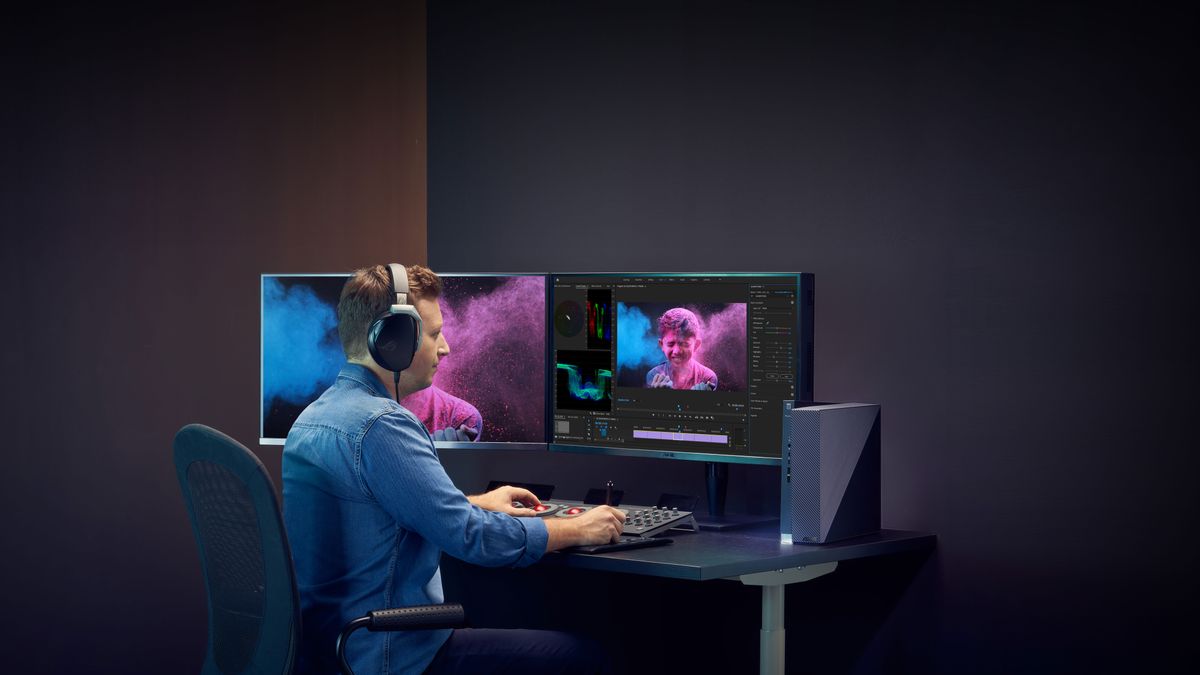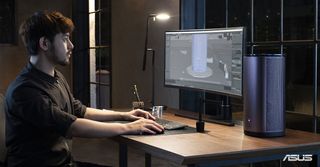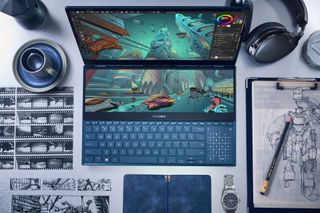6 powerful tips for taking control of your creativity
Optimise your workflow with the right equipment and mindset.

Being a creative is simultaneously one of the most frustrating and fulfilling things in the world. Whether you stretch your creative muscles as part of your career or simply work part-time as a hobbyist, there are few things more satisfying than a job well done, and at the other end of the spectrum, few things more infuriating than creative block.
The way the traditional workplace is structured doesn’t really help matters, either. The drudgery of the nine-to-five isn’t exactly conducive to creative expression. It doesn’t exactly get the juices flowing, nor does it mesh particularly well with how most of us function.
What that means for you is that you’ll need to take a few extra steps to take command of your own workflow. You’ll need to understand your own unique approach to your craft, and use that to inform the tools, strategies, and techniques you apply. And we can help.
Here’s how you can better access your inner well of imagination, and a few ways ASUS can help you do so.
01. Optimise your workspace...

A chaotic or impersonal office can be one of the biggest killers of productivity – and therefore creativity – you’ll ever encounter. Your workspace should be where you’re at your most inspired. It should be where you go when you do your best work. If it’s not that, then there’s something very wrong.
There are a few pieces of advice to offer here. First, take steps to reduce clutter as much as possible. If something doesn’t serve a purpose, it has no place in your office. That doesn’t mean throw out your personal decor, of course. But you might want to take a look at your PC.
While some people enjoy the aesthetic of bulky, cumbersome desktop towers, the amount of space they take up is usually better spent on other things – like more monitors, for instance. A dual (or even triple) monitor setup can vastly improve your workflow, allowing you to pull up multiple reference sources, collaborate with colleagues, and ultimately make working at your desk more comfortable.
Here’s where ASUS comes in. The ISV-certified ProArt PA90 Mini PC is one of the most compact desktop rigs on the market. And it packs a lot of power into a small and elegant package, with a NVIDIA Quadro P4000 graphics card with the capacity to run multiple high-resolution displays. As part of the Quadro line, the P4000 is designed for graphical precision, making it great for 3D model renders and engineering applications.
The ProArt Display PA32UCX monitor, meanwhile, is the perfect replacement for any drab, low-resolution displays you may currently struggle with. It’s the world’s first 32-inch 4K monitor, equipped with mini-LED backlighting and support for multiple HDR formats including Dolby Vision. For graphic designers especially, it offers industry-leading colour fidelity, for the brightest whites and the deepest blacks.
02....But know that inspiration can strike at any time

Of course, you already know that you’re not always going to be at your desk when an idea worms its way into your mind. You might be relaxing at home, kicking back at a coffee shop or off on a camping trip.
While you certainly could cart around a pen and paper with you, it’s a lot more efficient to have a portable workspace. ASUS offers two of note, depending on your needs. The first, designed for consumers and professionals alike, is the ZenBook Pro Duo.
A laptop designed for multitasking on the go, this is in many ways the laptop of tomorrow, with an innovative design that incorporates two screens. Even better, the second is a full-width touchscreen that works with the main display. This allows you to view multiple programs across the two displays, or bust out a stylus for drawing.
The ProArt StudioBook Pro 17, meanwhile, is designed more with professionals in mind. As with the ProArt PA90, it incorporates an Nvidia Quadro graphics card – the RTX 3000 to be precise. This gives the 17-inch laptop the necessary power to tackle virtually any project you need it to, no matter where you are on the road.
It’s also fully ISV-certified, so it can be easily loaded up with all the applications you need for the workplace.
03. Understand your creative cadence
One of the most important details you need to know about being a creator is that it’s a deeply personal thing. Everyone’s creative process is a little different, everyone works at a different cadence.
Some people are night owls, and find themselves awash in inspiration only when the moon is high in the sky. Some people can’t focus unless they’ve got smooth jazz playing in the background. Others get their best ideas right after a workout, or with a stiff drink in hand.
Disregard any advice about the best time to immerse yourself in your projects, and throw away the concept that there’s one single way to be productive. Figure out what works for you specifically – what inspires you and when you do your best work.
04. Give yourself time to think

Perhaps the only universal rule about creativity is that it takes time. It’s inadvisable (and probably impossible) to be in a creative mindset 24/7. You need the opportunity to step back from a project every now and then.
Start slotting that time into your schedule. Set hard boundaries in terms of when, where, and how you’ll engage in your craft, and stick to them. It might feel like you’re getting less done by working less, but you aren’t – you’re simply giving yourself time and space to breathe and excel.
Again, it’s important to note that these boundaries vary by the individual. If you’re passionate enough that you want to dive into what you do 24/7, that’s great. You do you (although don't forget to sleep).
05. Experiment with software
Unless you’re working with a very specific set of guidelines – for instance, a client requires that you work within a particular software platform – it’s important not to put any limits on the software you use.
Adobe Photoshop isn’t the only graphic design tool on the market. WordPress is not the only content management system, and Airtable is not the only project management tool
Just as you should give yourself time to experiment and grow as a creative, you should also take the time to explore potential additions (or alternatives) to what you already have in your toolkit. You might well come across an app that makes you wonder how you lived without it.
06. Remember that work is a mindset, not a place
Working in a creative profession can be simultaneously incredibly frustrating and immensely rewarding. It’s the nature of what we do. But by understanding your workflow, using the right software, and equipping yourself with the necessary tools, you can help ensure that it’s more frequently the latter rather than the former.
Learn more about how ASUS can support your creative drive via the ASUS website.

Thank you for reading 5 articles this month* Join now for unlimited access
Enjoy your first month for just £1 / $1 / €1
*Read 5 free articles per month without a subscription

Join now for unlimited access
Try first month for just £1 / $1 / €1
Get the Creative Bloq Newsletter
Daily design news, reviews, how-tos and more, as picked by the editors.
The Creative Bloq team is made up of a group of design fans, and has changed and evolved since Creative Bloq began back in 2012. The current website team consists of eight full-time members of staff: Editor Georgia Coggan, Deputy Editor Rosie Hilder, Ecommerce Editor Beren Neale, Senior News Editor Daniel Piper, Editor, Digital Art and 3D Ian Dean, Tech Reviews Editor Erlingur Einarsson, Ecommerce Writer Beth Nicholls and Staff Writer Natalie Fear, as well as a roster of freelancers from around the world. The ImagineFX magazine team also pitch in, ensuring that content from leading digital art publication ImagineFX is represented on Creative Bloq.
